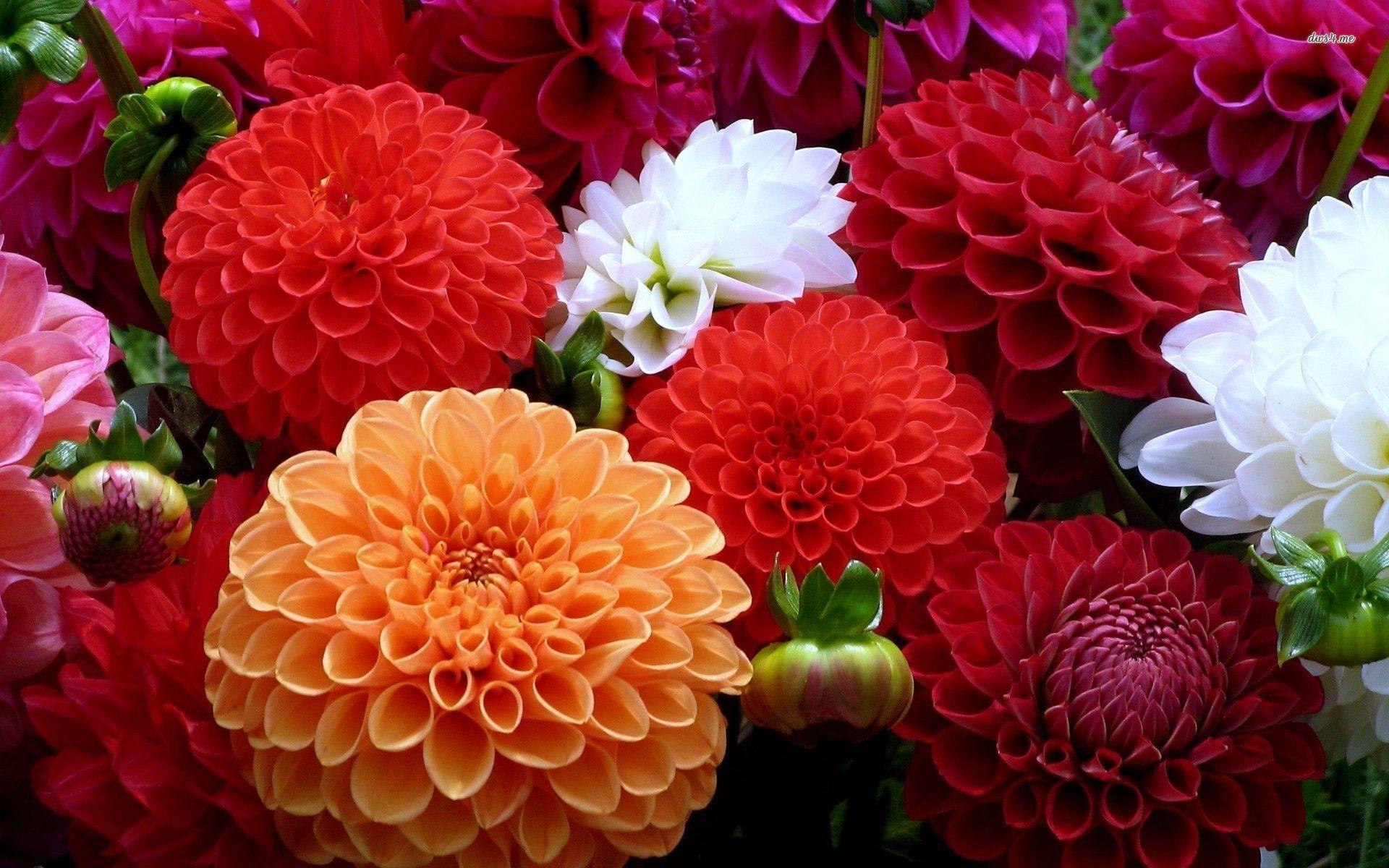Table of Contents
Dahlias are a type of perennial plant that grows from tubers, which serve the plants as a source of food until it begins to photosynthesize. These tubers just go on to multiply underneath the ground during the flourishing season. Propagating dahlia is a straightforward process that involves locating and splitting dahlia tuber clumps of current years to bring out more plants the following year.
However, unlike daylilies, dahlias are susceptible to cold temperature areas or zones, which means that in these areas, the tubers must be dug up and stored in a cold place indoors during winter to grow them as perennials. In warm temperatures, where the tubers can continue to remain in the ground, they can be dug up, splitter, and replanted in the early spring season prior to the emergence of new growth.
Dahlias have the capability of being cultivated indoors in colder regions until the final spring frost has passed.
Equipment Required for Lifting and Splitting Dahlia Tubers
Prior to The Splitting Process
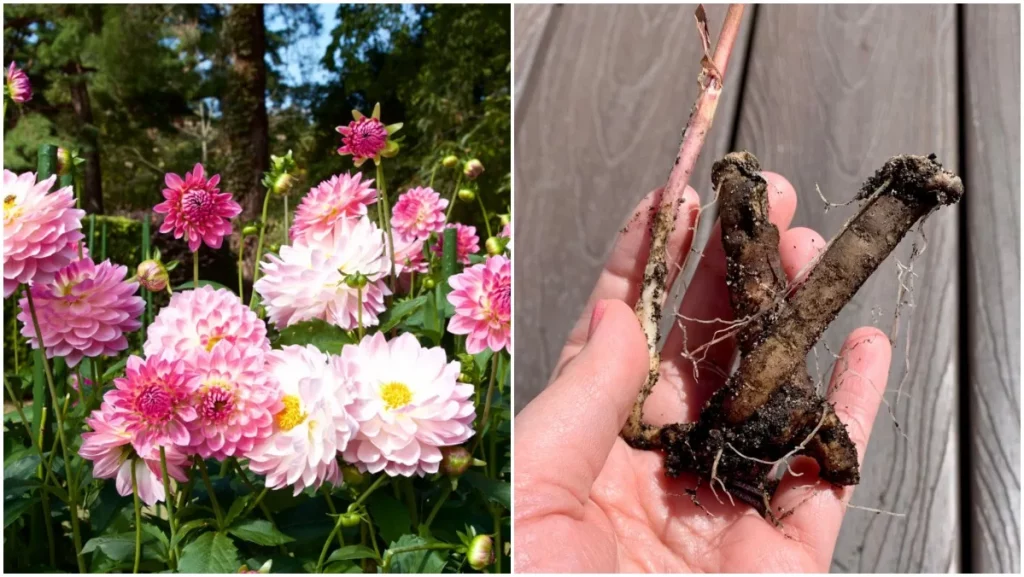
To prevent damage to the tubers, it’s important to lift the clump of roots during the fall season carefully. However, wait until later to divide the roots. Remove the previous year’s mother tuber, which will not prove to be a productive plant since its energy is mostly spent. Use clean shears to avoid passing diseases onto the tubers, and discard any tubers with skinny necks, damage, mould, or broken areas.
Look for swollen eyes on the tubers, and if it’s difficult to identify them, place the tubers of dahlia in a moist, warm area for a week to allow the eyes to sprout. Cut these apart carefully, and some gardeners suggest dusting the cut wound with sulphur to protect against fungal disease, although it’s unnecessary. Finally, plant the tubers right away to enjoy another season of beauty.
How to Lift Dahlia Tubers
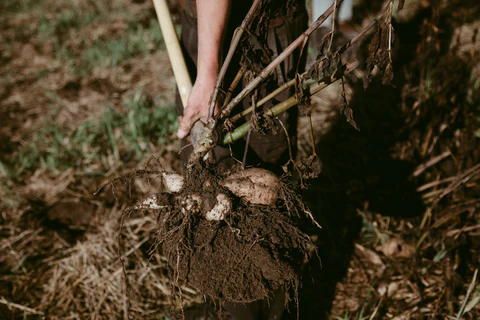
To lift the clump of tubers from the soil, work with a shovel or pitchfork to make slices from 12 to 18 inches far from the plant, encircling entirely. As you slice, lift the shovel or pitchfork slightly and separate the clump from the soil by removing it. You have to be alert not to damage the tubers. After the last slice, the clump should become loose and can be extracted from the ground. Release the soil from the clump by shaking, brushing, or using your hands.
Using a hose to wash off dirt is a technique some people use to ward off pests and diseases, while to safeguard the skin and avoid shrivelling, some people choose to leave the surface dirt undisturbed. It is often suggested to leave the clumps in a dry and covered place with low humidity for quite a few hours to stiffen the necks and minimize the risk of damage during the process of division.
How To Divide Dahlia Tubers
1. Remove the Foliage

Dividing a large clump of dahlia tubers that have been inside the ground for more than two years can be tricky. The tightly packed mass of different-sized tubers can make it almost unworkable to split them without causing damage. However, you can make the process easier by using an edged spade to cut the big clumps into four parts.
To do this, position the clump on the ground with the old stems facing upwards and place one foot on the trailing roots to keep it secure. Use your other foot to exert pressure on the spade and slice through the middle of the main stem remains to make it into two halves and then divide each half into two more to get four smaller clumps. This way, you can work out the best place to cut and reduce the risk of accidentally causing damage to the tubers.
2. Unearth the Tubers
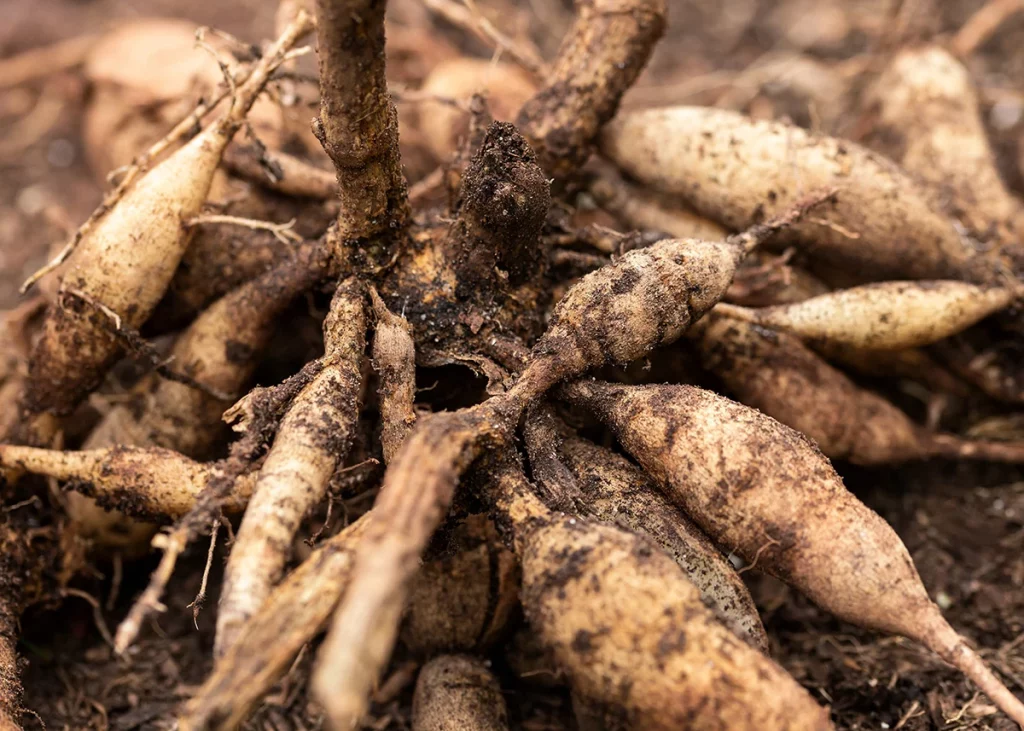
When digging up dahlia tubers, it’s easier to work with dry soil than damp and dense soil. Start by using a garden fork or shovel to gently cultivate the soil around the whole plant by extending nearly one foot from the main stem. A scoop is recommended over a pitchfork to avoid damaging the tubers.
Be gentle when lifting the plant away from the ground, as the tubers may break off from the crown. Once you have lifted the plant, quake and brush aside the soil and then water off the remaining to get a clear sight of the crown and the eyes.
3. Clean the Extra Oil
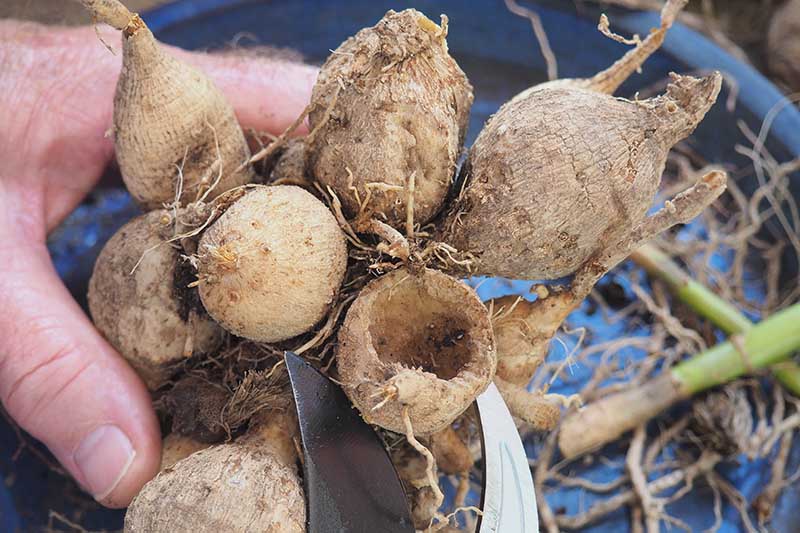
After lifting the tubers, it’s important to clean them thoroughly before dividing or storing them. To do this, use a soft brush or hose spray to remove any soil or debris from the tubers gently. Once cleaned, allow the tubers to dry for a few days. After drying, inspect the tubers and cut off any rotten, soft, or dead material with a pair of clean and sharp secateurs. This will help ensure that the tubers are in good condition and ready for planting or storage.
4. Splitting Dahlia Tubers
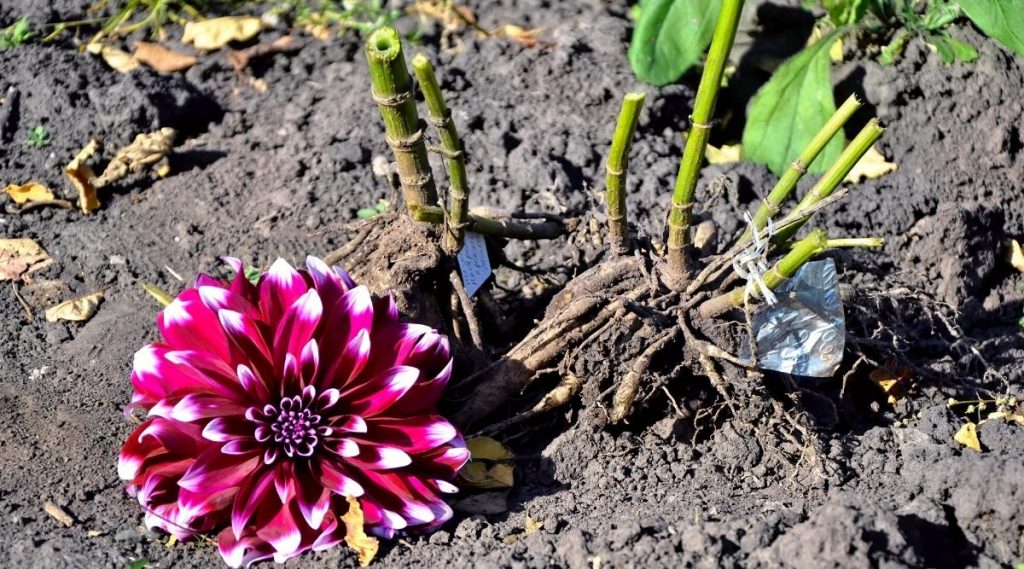
To divide a cluster of dahlia tubers, it’s important to have a crown affixed to each of the tubers. It is recommended to have a crown size of about one-quarter to half an inch square to make sure the presence of a minimum of one eye on each tuber. A good tool to use for cutting through tubers is sharp, narrow-pointed clippers. When making the first cut, it’s best to make a cut through the mid-section of the crown. This may result in giving up some of the tubers beneath, so give priority to the best ones by angling the cut.
When you are done with reducing the crown piece along with the various tubers attached, you can split it further. Examine how to make cuts to make sure that each tuber has at least a quarter of an inch square of the crown. If there are two to three tubers, which are too closely attached, making it not feasible to separate, it’s okay to let them be attached to one part of the crown.
5. Inspect for Signs of Disease
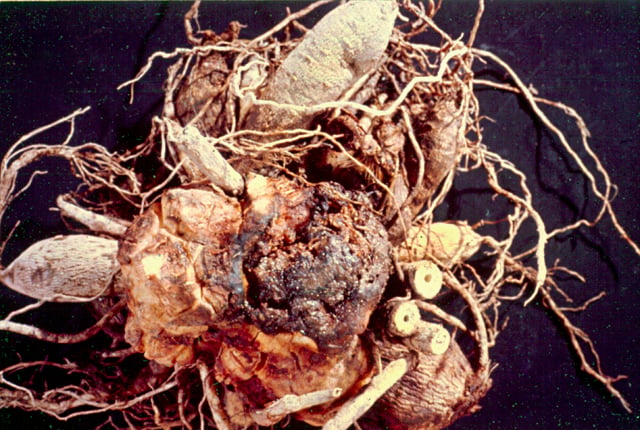
After dividing the tubers, it’s important to remove any remaining stem tissue to avert disease and insect damage. Check each tuber’s body by slicing a thin section off its base and inspecting for any signs of disease or infection from insects. Healthy tubers must display clean, ivory-coloured flesh without any trace of brown blemishes.
If any brown areas are present, keep slicing until healthy tissue is exposed. Any tubers that are smaller than a AA battery should be discarded after the removal of brown parts. After reaching the healthy tissue, allow the end of the cut to dry and create a seal for about approximately 24 hours.
6. Winter Storage
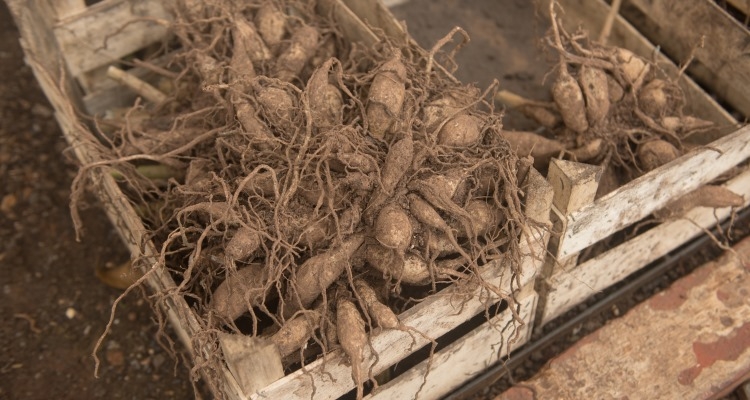
To store the divided Dahlia tubers, you’ll need a breathable container such as a net bag or newspaper. Avoid using sealed plastic bins as they can trap moisture and lead to rot. Instead, opt for a box made out of cardboard or a milk crate. Keep the container in a cold, covered, and dark spot, such as a basement or garage.
Many growers suggest adding zinc oxide or bog moss to the container to maintain moisture levels. Aim for a temperature from 4 to 10 degrees Celsius, and ensure there’s adequate air circulation to prevent the rot to occur.
Replanting of The Tubers
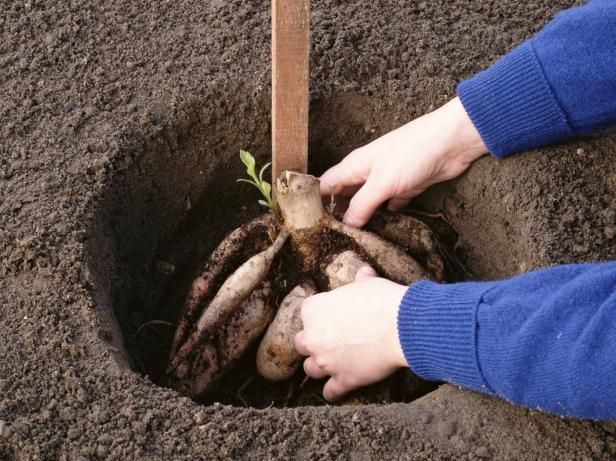
To plant dahlia tubers successfully, you should aim to do so in late winter for indoor orchards or in the middle of the spring for garden planting. When planting, make sure to place the tuber from 4 to 6 inches of depth in the soil, placing the new green shoots or the eyes in the upward direction. Lightly tamp down the soil and avoid watering at this stage, as the tuber won’t be able to take in the nutrients or water until and unless its feeder roots start to grow. When green growth emerges, you can start watering thoroughly on a weekly basis with a water depth of one to two inches.
To satisfy the high amount of water needs, it’s important to guarantee that the moisture reaches the roots, which can be as deep as six inches. Moreover, you’ll need to stake tall dahlias to protect them from drooping. For extra support, even at the time of planting, you can secure them.
What Is the Right Time to Dig and Split Dahlia Tubers?
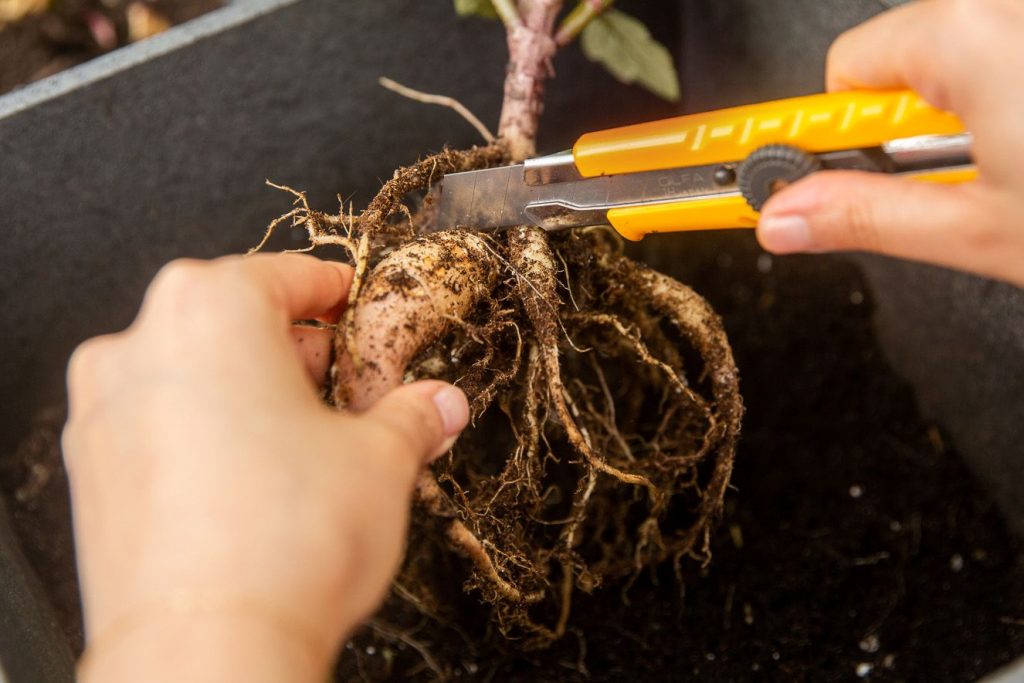
Dahlia Tubers need to be dug up before winter to avoid rot or death from a hard freeze. If you wait until spring, you may end up with a mushy mess. Wait until after the first frost, and the foliage turns black before digging them up. Cut back the stem and Foliage to 4-6 Inches and leave the tubers in the ground for at least 10 days to cure and fully develop. But don’t wait too long, as the tubers may not survive if temperatures drop below 20 degrees Fahrenheit. When digging up the tubers, make sure it’s a dry week without any expected rainfall to avoid introducing rot. Divide dahlia tubers in spring before planting, as each tuber needs a viable growth bud.
Benefits of Splitting Dahlia Tubers Every Year
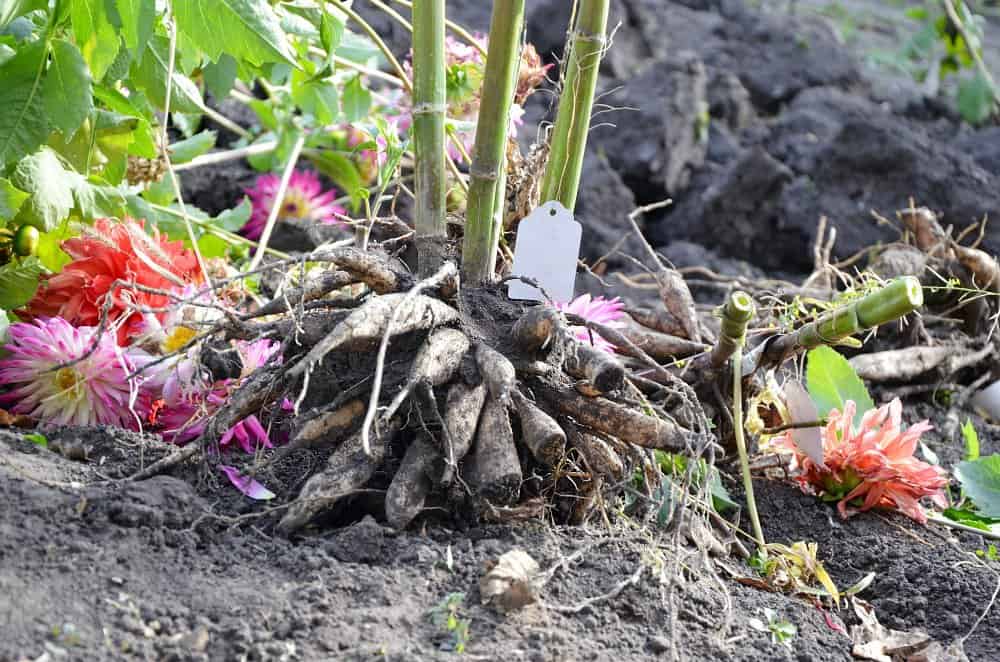
To ensure optimal growth and flower production, it’s recommended to lift and divide dahlia tubers every year, regardless of where You live. This will make it easier to divide them the following year as part of your regular garden maintenance. Leaving clumps in the ground for too long can make them heavy, time-consuming to unravel, and increase the risk of damage to the tubers. Regularly lifting, dividing, and storing the tubers also reduces the risk of rot caused by cold, wet soil or diseases and protects them from predators such as chipmunks, gophers, mice, rats, and voles. It also allows for the removal of mother tubers and those that are too small to reproduce.
Final Thoughts
Lifting, dividing, and splitting dahlia tubers is an important task that should be done every year to ensure healthy growth and abundant blooms. Leaving the tubers in the ground for too long can result in heavy clumps that are difficult to unravel and may suffer from rot and disease.
Dividing the tubers annually also helps remove the mother tubers and those too small to reproduce, leading to more vigorous growth and larger flowers. It is best to wait until after the first frost and the foliage have turned black before digging up the tubers and storing them in a cool, dry place until spring planting.
By following these simple steps, you can enjoy a beautiful and bountiful dahlia garden year after year.
Frequently Asked Questions (FAQs)
When Should One Divide the Tubers?
You should divide dahlia tubers in the spring, after the last frost, and when new growth appears, but before planting them in the ground.
What Will Happen if The Tubers Are Not Divided?
If the tubers are not divided, clumps left in the garden for two or more years become very heavy, are time-consuming to unravel, and there is more risk of damage to the tubers as you process them. Additionally, there is a lowered potential for better plant growth and more flowers than if you leave them in the ground, and there is an increased risk of rot caused by cold, wet soil or diseases.
Is the Multiplication of Tubers Possible?
Yes, multiplication of tubers is possible through division. Dahlias can be divided into smaller sections, with each section having an “eye” or a growth bud. Each section can be planted separately to produce a new dahlia plant. This is an effective way to increase your dahlia collection and maintain plant health.

